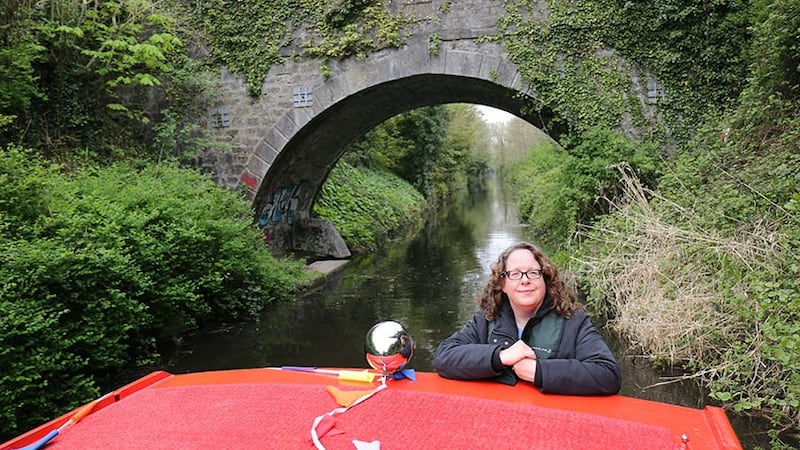A coalition of community groups, representing thousands of households from Dublin to Kildare, have banded together to oppose the closure of level crossings for the planned €1 billion Dart + West line.
Residents' associations say the closure of six roads, that cross the railway line between Connolly station and Maynooth, will sever community links, result in large detours to access shops, schools and other services and jeopardise the sensitive environment of the Royal Canal.
Plans to bring Dart train services to the west of Dublin through the upgrade and electrification of the rail line from the city centre to Maynooth and Dunboyne will be submitted by Irish Rail to An Bord Pleanála this summer.

The project, first announced 17 years ago, will mean the doubling of train services along the line from six to 12 per hour per direction, increasing hourly passenger capacity from 5,000 to more than 13,000 each way.
However, it will involve the closure of six level crossings from Ashtown in Dublin to Blakestown, west of Leixlip in Co Kildare.
The Dart West Community Coalition, an alliance of 10 residents groups, said they “fully support” the Dart project but the permanent closure of the roads is unnecessary and will leave some communities cut off from essential services.
"Dart +West is a great project that is much needed and will be wonderful for communities along the line. However, it does not take into account the journeys made throughout the day across the line," said coalition member and Coolmine resident Christine Moore.
The coalition wants Irish Rail to consider closing the crossings at busy times only and allow the roads to be used at off-peak hours.
“What we want is meaningful consultation with Irish Rail, not just a box-ticking exercise,” she said.
Irish Rail spokesman Barry Kenny said there had been extensive consultation, which had already resulted in alterations to the project.
“Arising from the first public consultation, the project team has modified the preferred solution at Coolmine Level Crossing and at Ashtown following the second consultation.”
The original scheme for Ashtown involved the closure of horse-riding centre Ashtown Stables for an underpass beneath the rail track and canal. Public consultation has recently been completed on a proposal to move the vehicular underpass further to the west of the stables.
At Coolmine, a controversial traffic bridge over the line and the Royal Canal has been scrapped with a pedestrian and cycle bridge proposed instead. Similarly, pedestrian and cycle overpasses of the track and canal are proposed to replace the level crossing at Porterstown and Clonsilla.
However, Ms Moore said these pose problems for the sensitive environment of the canal. “Porterstown and Clonsilla are both very historic areas, with old protected structures that will jar with the large pedestrian/cycle bridges being proposed.” Having three cycle and pedestrian bridges spanning this part of the canal would “completely detract” from the landscape, she said.
“It is essentially a limestone gorge, with the towpath 15ft above the water and a tree canopy meeting overhead. It’s known as the ‘Deep Sinking’ and is the only part of the canal that was constructed through quarries. It is a proposed natural heritage area with graceful 18th century canal bridges.”
The last two level crossings planned for closure, furthest west towards Kildare are not at stations but along country roads. At Barberstown, north of Westmanstown Golf Club, a traffic bridge will be built just south of the current crossing.
However, the last level crossing Blakestown, in Kilmacredock, will not have any replacement infrastructure, which will leave 120 homes cut off from their bus service, said local resident and coalition member Áine Di Mascio.
“We’re 3km from the centre of Leixlip and 5km from the centre of Maynooth. Where people would have walked a maximum of 15 to 20 minutes to reach the bus stop, they will now have to travel at least 2.5km.”
Residents on Kilmacredock Lane asked Irish Rail for a pedestrian route across the line, but it has not been included in the preferred option for Dart + West, she said.
Using the car
“What this does is force people who want to use public transport, who want to take the bus, to get into a car,” she said.
“This is not the case of a level crossing closure being more inconvenient because you have to take a detour when you’re driving, this is cutting people off from access to their bus route. And we think it’s unlikely we will have any opportunities to use public transport in the future because if they are not going to build a footbridge they’re not going to build a station here.”
The closure also blocks the community from access to the canal amenity, she said. “During the pandemic in particular a lot more people would have used the canal walk for exercise, and it would be well used by a lot of my elderly neighbours, that’s not an option for them now.”
Mr Kenny said the feedback has been assessed and would form part of a “consultation findings report” to be published as part of the Railway Order application to An Bord Pleanála.
“The final Railway Order submission will be open to the public to make observations on to An Bord Pleanála on any aspect of the proposals.”
Mr Kenny said the closure of the level crossings was central to achieving the increased capacity.
“Level crossings restrict train frequency and dramatically reduce the number of services that can operate. For example, Coolmine level crossing is closed for approximately 40 minutes between 8am-9am each weekday for six trains per hour per direction. As the targeted capacity would effectively see level crossings permanently closed, it is not viable to retain the level crossings.”
The closure of the crossing would also improve safety, he said, eliminating the risk of motorists striking closed and closing crossing gates.








